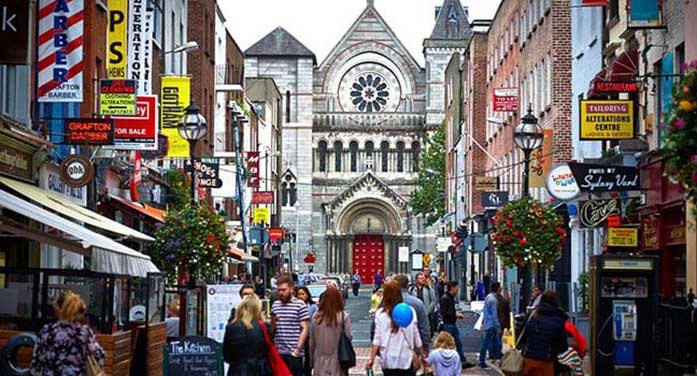 December 1921 was a critical turning point in Irish history.
December 1921 was a critical turning point in Irish history.
The Dec. 6 Anglo-Irish Treaty aimed to end the War of Independence by “establishing the Irish Free State as a self-governing dominion within the British Commonwealth.” But it actually did more. It effectively launched the fledgling entity on a glide path toward full independence without the need for further wars of liberation.
For better or worse, the new state went its own way with minimal interference from outside.
It pursued a version of economic self-sufficiency, cultivated a puritanical Catholic ethos, stayed neutral during the Second World War and – in 1949 – declared itself a republic.
Things didn’t work so well economically. The country was relatively poor, fell behind the living standards of reasonable comparators and relied on heavy emigration as a safety valve for the population it couldn’t sustain on its own.
Then it switched direction toward an open trading economy, joined the European Union and morphed into a modern secular society. In the process, it became one of Europe’s more prosperous countries.
However, that’s history with the benefit of hindsight.
Although supported by the majority of people at the time, the treaty was bitterly divisive and precipitated the Irish Civil War (1922 to 1923). The pro-treaty forces decisively prevailed, but the ensuing resentment disfigured politics for at least a couple of generations. A full 30 to 40 years on, the world I grew up in still resonated with passionate debate and burning enmities.
Adding fuel to the fire was the commonly expressed view of the treaty as responsible for the partition of the island, whereby the northeastern counties – Northern Ireland – were hived off into a separate unit and remained an integral part of the United Kingdom. Given partition’s emotional salience in Irish political discourse, that was an explosive accusation.
It was also historically inaccurate. In fact, it got things the wrong way round.
Chronologically, partition preceded the treaty by a year.
In response to the irreconcilable aspirational differences between the northeastern majority and the more populous rest of the country, the Government of Ireland Act (December 1920) partitioned the island along the lines that remain in place today. The new Parliament of Northern Ireland was formally inaugurated in June 1921, making partition a done deal.
In effect, partition cleared the way for the treaty. By taking the idea of “one Ireland” off the table for the moment, it enabled negotiations on what was practically attainable in the here and now.
It wasn’t a question of Irish nationalists liking partition. They strongly resented it. And still do.
But partition as a fact of life was widely acknowledged. Even the leader of the anti-treaty forces tacitly accepted that coercion wasn’t a viable solution.
The actual sticking point in the treaty debate was symbolic. It was the Oath of Allegiance that Free State parliamentarians would be required to take.
Any oath referencing the “King of England” was going to be problematic. Anticipating this, the Irish negotiators wangled some fine-tuning.
To quote historian J.L. McCracken: “Instead of being, as in the other dominions, the straight-forward oath of allegiance to the king, the Irish oath prescribed allegiance first to the constitution of the Irish Free State, [and] secondly to the crown in virtue of the common citizenship between the two countries and the association of Ireland with the Commonwealth of Nations.”
That, however, was still a bridge too far for significant numbers of Irish nationalists. Wedded as they were to the concept of an Irish republic, the oath was a repudiation of what they’d fought, bled and killed for. It would render everything they’d experienced meaningless.
 The oath in practice proved eminently susceptible to a fudge and was abolished in 1933. In the meantime, Ireland had a civil war with all of the attendant nastiness and recurring bitterness.
The oath in practice proved eminently susceptible to a fudge and was abolished in 1933. In the meantime, Ireland had a civil war with all of the attendant nastiness and recurring bitterness.
The whole affair exudes an aura of tragic futility. It also provides a fascinating study of competing perspectives, each passionately real to its proponents.
There’s the practical versus the principled. Or, if you prefer, the flexible versus the doctrinaire.
Do you take what you can get and seek to build on it? Or is it a matter of all or nothing?
Partition aside, the treaty delivered the full independence agenda within a relatively short period. But in the event of a do-over, its opponents wouldn’t necessarily change their minds.
People are complicated.
Troy Media columnist Pat Murphy casts a history buff’s eye at the goings-on in our world. Never cynical – well, perhaps a little bit. For interview requests, click here.
The opinions expressed by our columnists and contributors are theirs alone and do not inherently or expressly reflect the views of our publication.
© Troy Media
Troy Media is an editorial content provider to media outlets and its own hosted community news outlets across Canada.

